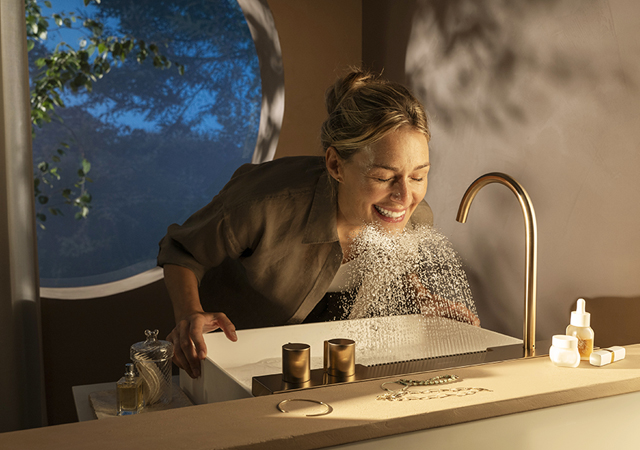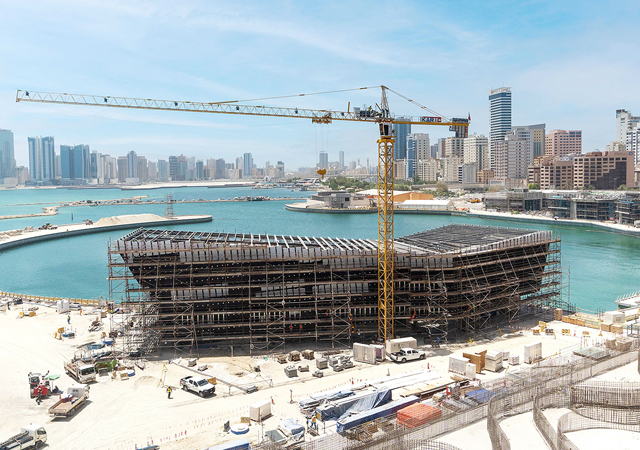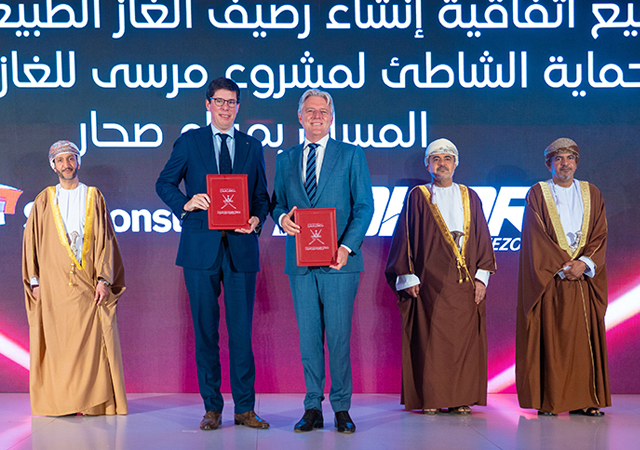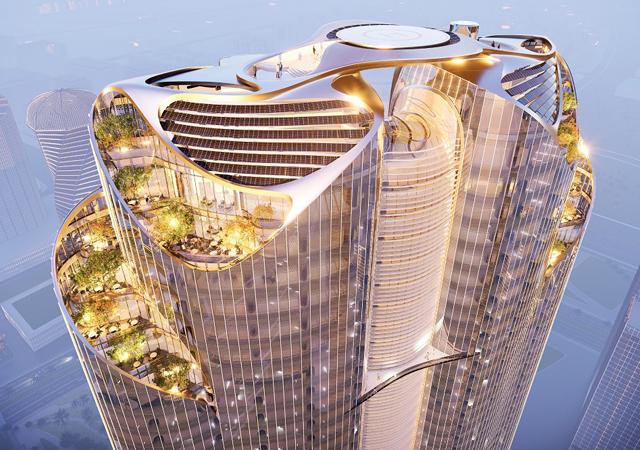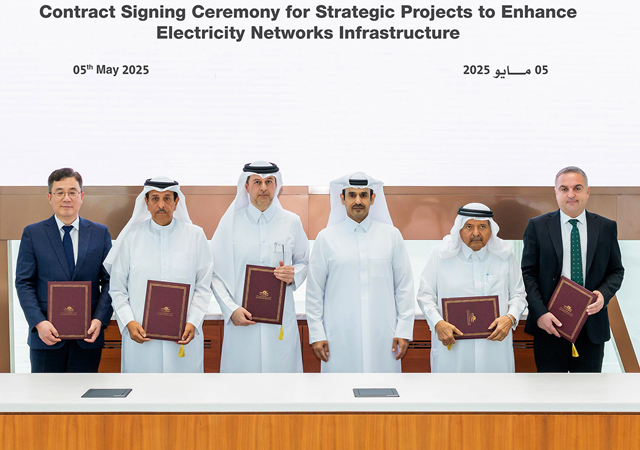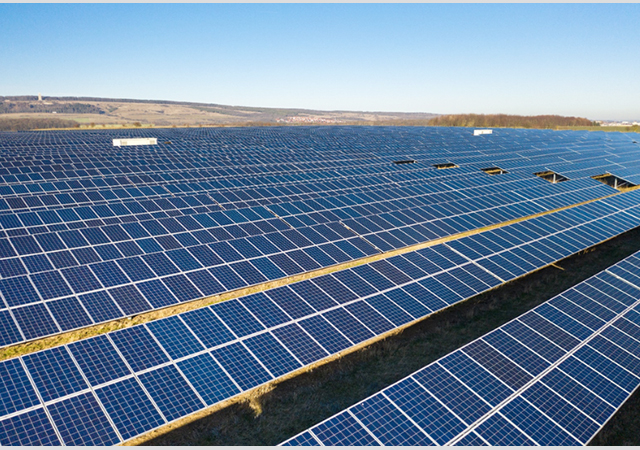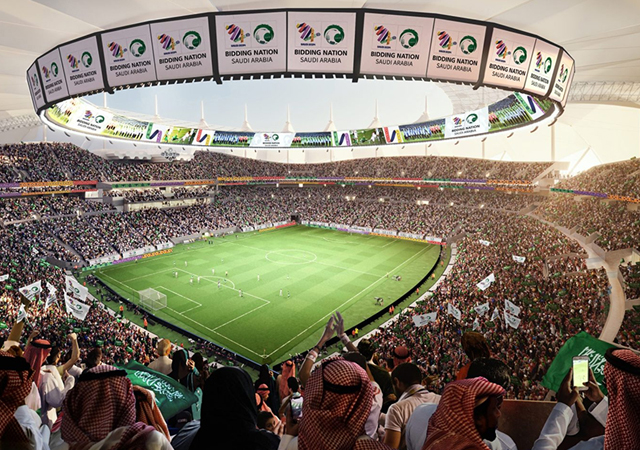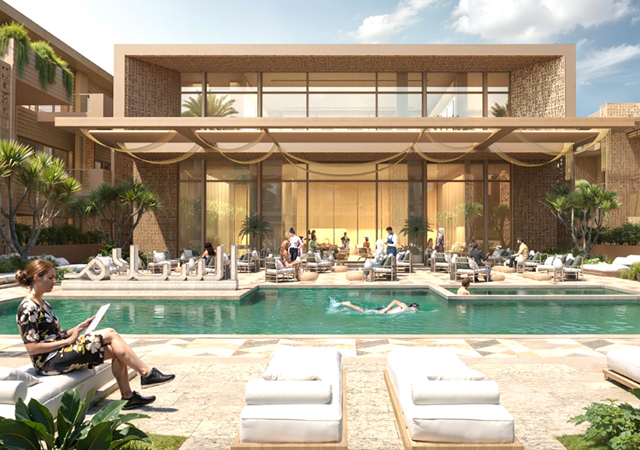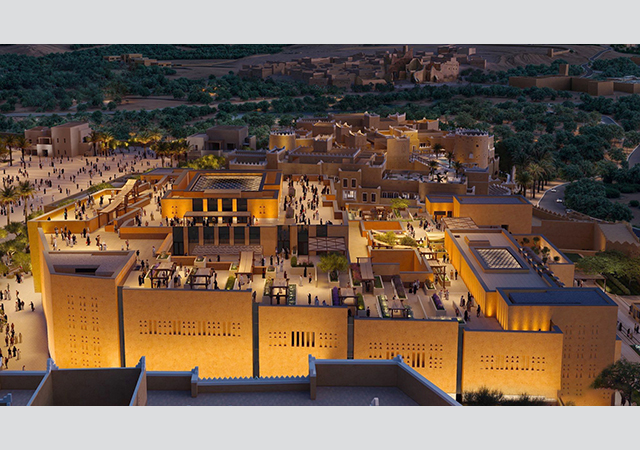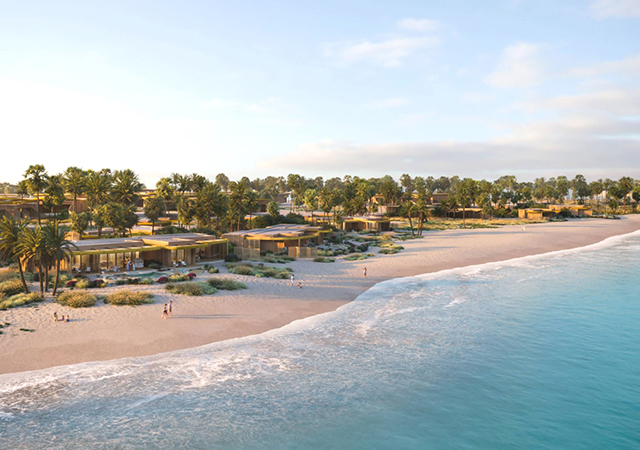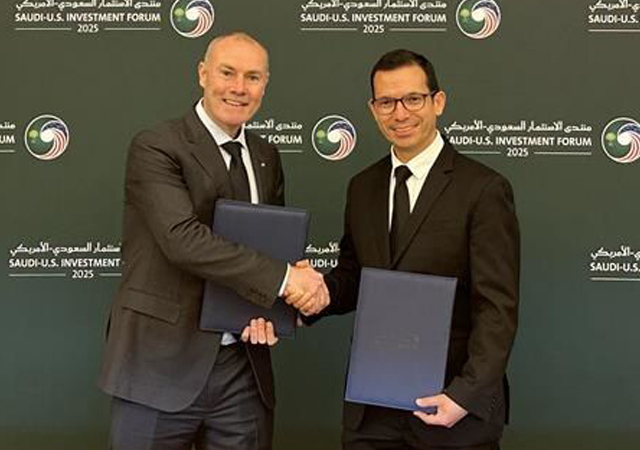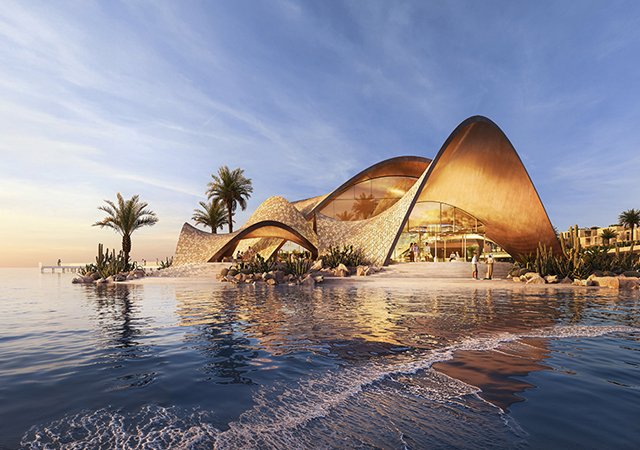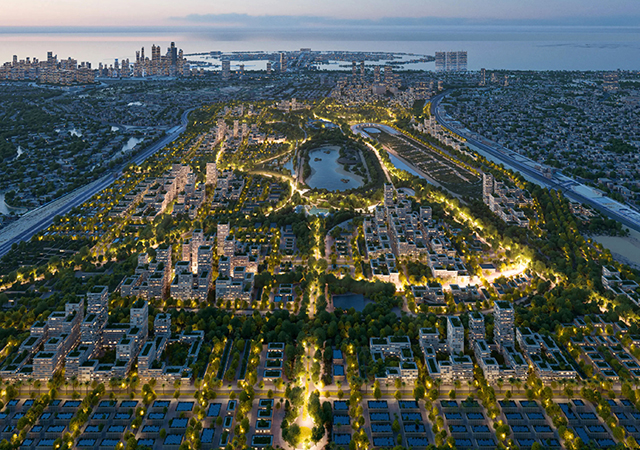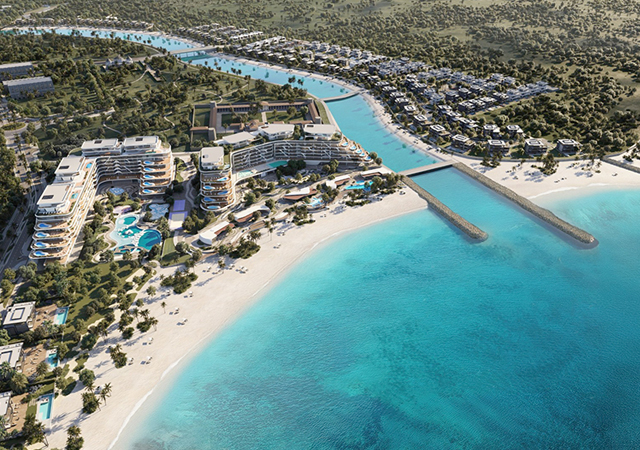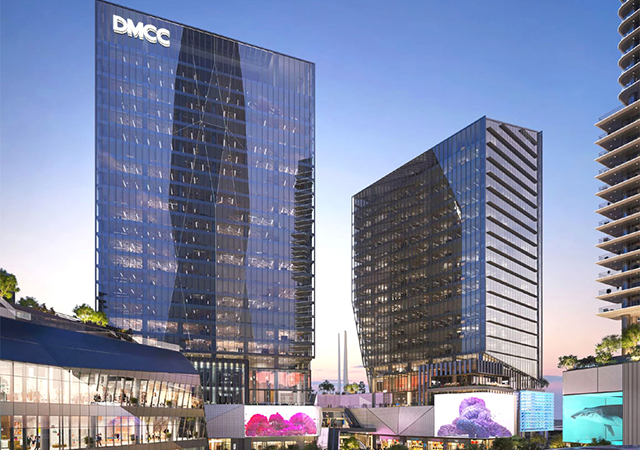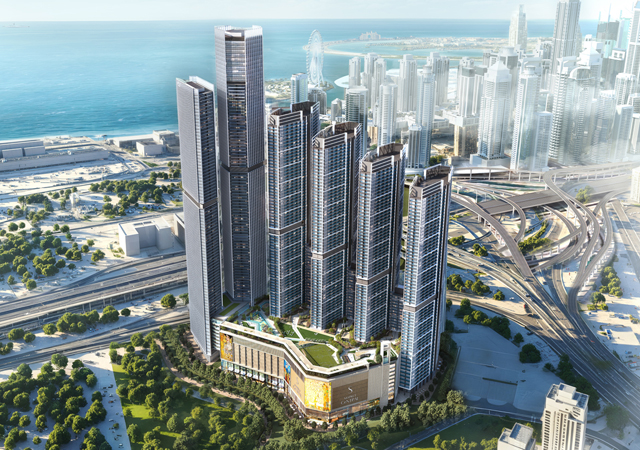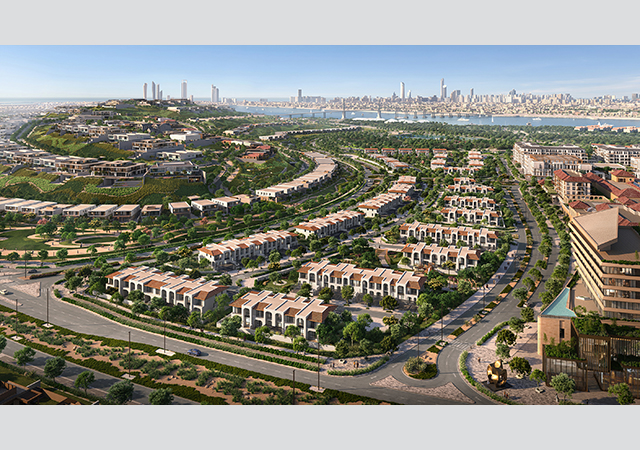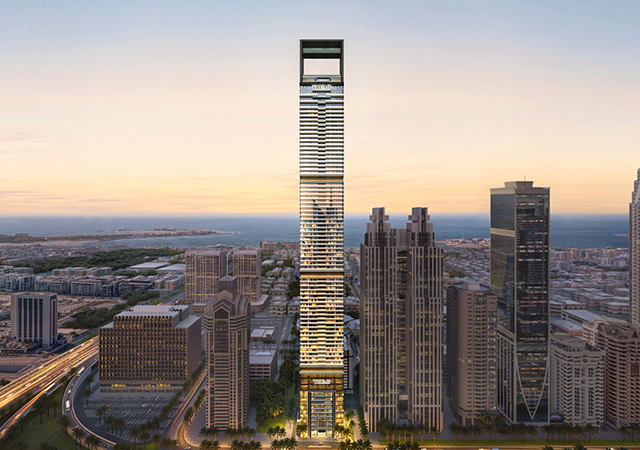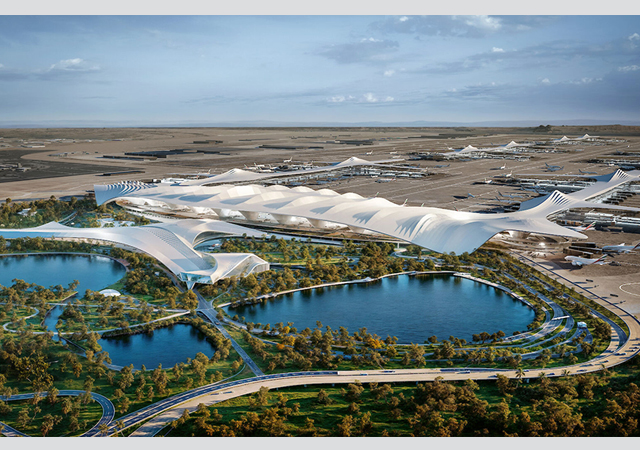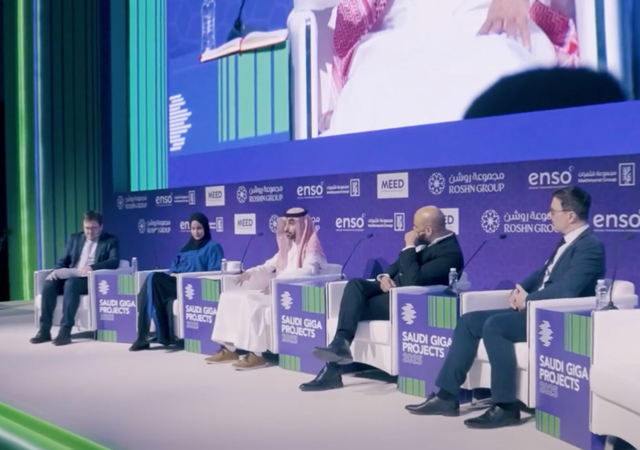

The spires that surmount the Bahrain World Trade Center (BWTC) and some of the massive structural columns are currently among its most eye-catching features – and remain so until they are dressed in blue-tinted glazing.
These components have taken shape thanks to the expertise of Kooheji Contractors, the specialist in civil engineering, mechanical engineering and carpentry works, which fabricated and installed the spires and also produced the custom-made formwork that was used to build the slanting columns that extend all the way to the top of tower.
As the largest steel fabricator on the BWTC, the Bahrain-based firm also produced the primary steel elements that have been installed for the fine dining area, the VIP entrance, the VIP ladies canopy, and the south and west entrance canopies.
“We started on the project even before it broke ground – by undertaking the steel supports for the portacabins that accommodate the site offices,” says planning and operations controls manager Chuck Chandonnet.
As the contractor Nass Murray & Roberts (NMR) required special circular formwork that had to be fabricated in a workshop, it turned to Kooheji Contractors, and producing the formwork was a challenge because of extreme accuracy in maintaining the size and angle of the columns to be concreted, he says.
Kooheji was also tasked to produce the towers’ steel spires. While the fabrication of the spires was well within its expertise, the design and installation was an unexplored area for the company and other local contractors – since the BWTC is among the first towers in Bahrain to touch a height of 240 m. The firm enlisted the services of Singapore-based steel specialist TTJ Design & Engineering – with which it had previously worked on the Alba calciner jetty – to enable it to take on the challenge.
The two spires have an overall height of 57 m and are erected at a base level of 183 m. To install them, Kooheji used the centrally-placed 6-tonne crane on site, as it was the only one that could offer the reach.
As each spire weighs more than 150 tonnes and on account of the limitations set by the crane, the spire’s structures was divided into five tiers to enable erection.
“To erect the first tier (which was the heaviest on the tapering spire), we lifted the three base columns (main CHS pipe columns) and anchored them with Macalloy pretensioned bolts that were already installed by NMR on the concrete structure,” says Chandonnet. “The cross braces comprising horizontal and diagonal members, were then lifted separately and attached. Tiers 2 to 5 were installed in modular form with as many members as possible depending on the weight. The spires also include secondary steel for mounting the cladding work.”
All steel structure was fabricated and coated with a finishing paint before delivery to site for erection.
“Apart from safety being a huge consideration – we were unable to lift on certain days because of the winds – we had to calculate the weight of every single piece that went into erecting the spire because of the weight limitations imposed by the crane. We also had to calculate the number of lifts we would need to erect each spire,” he adds.
In total, the two spires needed 221 lifts to complete their erection and, according to Chandonnet, the installation procedure was carried out almost to plan (95 per cent). Kooheji started fabrication of the spires in January and began trial erections in March. Actual erection work commenced on June 9 this year and was completed in mid-August.
Kooheji is now fabricating the steel door that will go into the bottom of the spire, where the BMUs (building maintenance units) will be housed, and is also working with the cladding contractor to install additional frames for the glazing works.
Commenting about the project, Chandonnet says: “The BWTC project is a highly impressive landmark in the region. It has an experienced management team at the helm who are responsive to sub-contractors’ needs and very fair in their dealings.
“It’s been a team effort, which has been commendable and refreshing to see on this project. There has been a lot of cooperation and coordination between subcontractors – for instance, while we didn’t fabricate the bridges that support the wind turbines, we have provided bracings and gave the go-ahead to PSC (the subcontractor on the bridges) to deal directly with TTJ for assistance with the bridges,” he says.
Founded in 1973, Kooheji Contractors is a diversified business with civil, mechanical and carpentry divisions. It is registered as an A grade civil contracting company with the Ministry of Works. The company is also accredited for its quality management system (ISO9001:2000), environmental management system (ISO 14001:2004), and Occupational Health and Safety Management System (OHSAH 18001:1999).
Staffed by over 500 personnel, the company undertakes a full range of civil engineering activities for large and small-scale projects, including carpentry and mechanical works, and has been involved in numerous multi-storey residential apartments and offices both in the private and the public sectors.
“Another prestigious Bahrain project that we have recently completed is a 15,000 sq m storage facility at the Alba calciner jetty, which was built at the cost of BD5 million. The main contractor for this project is Italy-based Motridal Spa who completed all the design requirements while we were in charge of all the civil works and fabricated the roof structure that required more than 1,500 tonnes of steel. To ensure success on this project, we also partnered with TTJ to complete the actual steel erection,” he says.
The company has just clinched a major joinery deal, which involves fabrication all the doors – a whopping 2,500 of them in all – for the Bahrain Financial Harbour project.
According to Chandonnet, business has been upbeat with the company having witnessed its largest growth in the structural steel field.
“We have seen our fabrication tonnage increase threefold over the previous year. We have also begun fabricating steel for projects outside of Bahrain including countries as far as Iceland and will soon be doing projects in Qatar and Jordan as well. On the domestic front, we have recently opened a new steel fabrication workshop, quadrupling our capacity to 14,400 sq m,” he adds.
Commenting on the company’s business levels, managing director Abdul Ghaffar Kooheji says: “Our overall growth rate has been of 20 per cent per year over the past five years and we expect this to continue over the foreseeable future. Our steel fabrication capacity is also expected to grow by 25 to 30 per cent more over last year.”
Some of the prestigious clients on the company’s list includes the US Naval Support Activity, Embassy of the US, Bahrain Ministry of Agriculture, Public Works Department, Bahrain Defence Forces, Bahrain Telecommunications Company, Civil Aviation Affairs and Ministry of Development and Industry, Aluminium Bahrain, Bahrain National Oil Gas Company, Ministry of Water and Electricity, Bahrain Airport Services and Gulf Aluminium Rolling Mills Company, among others.
Among other projects that it has completed recently are 22 private villas in Juffair; Seef Star, Seef, a five-storey office complex; the 10-storey Middle East Plaza and the nine-storey Amaan Plaza, both in Juffair.


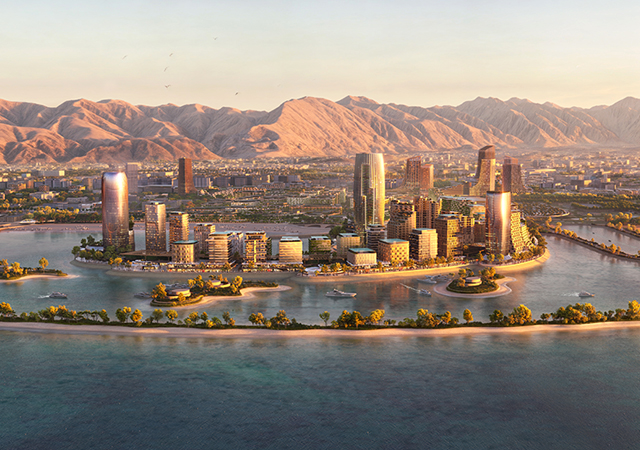
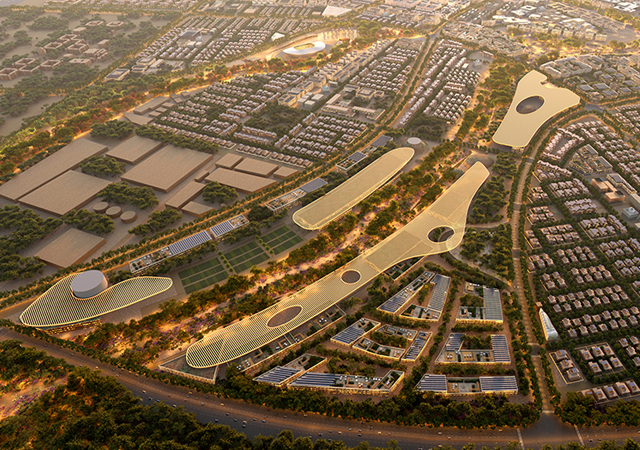
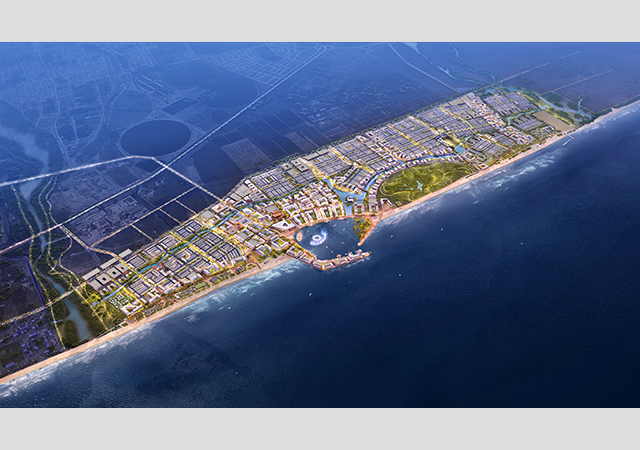
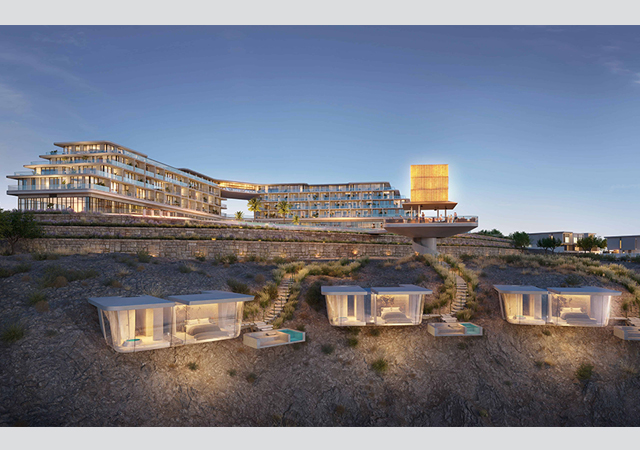
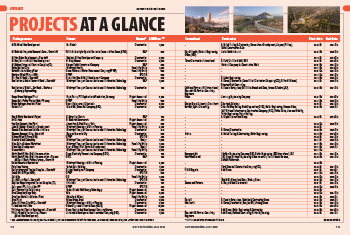
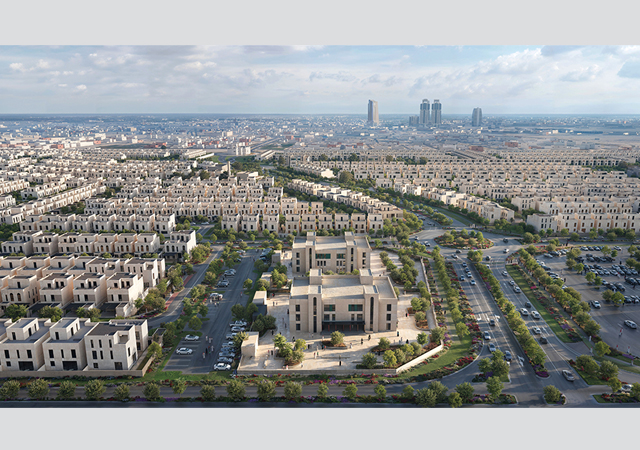
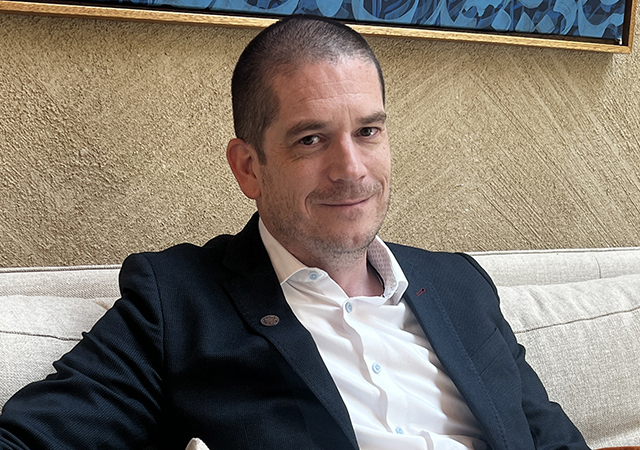

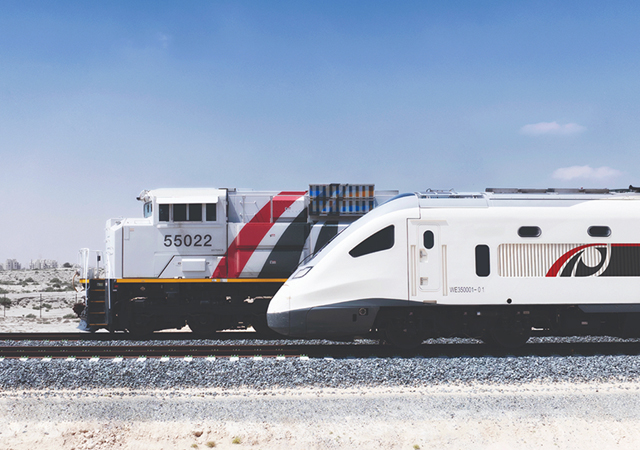
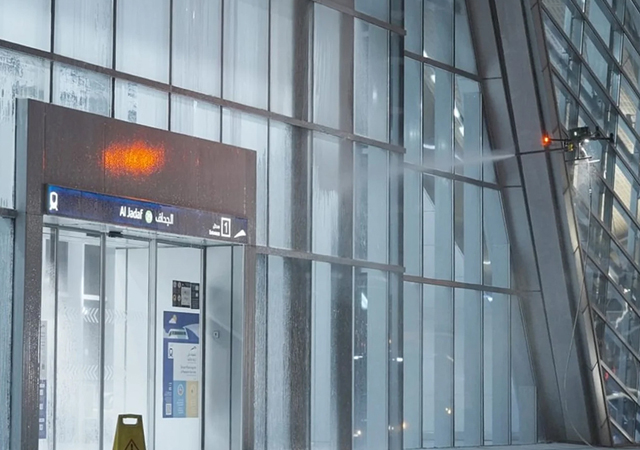
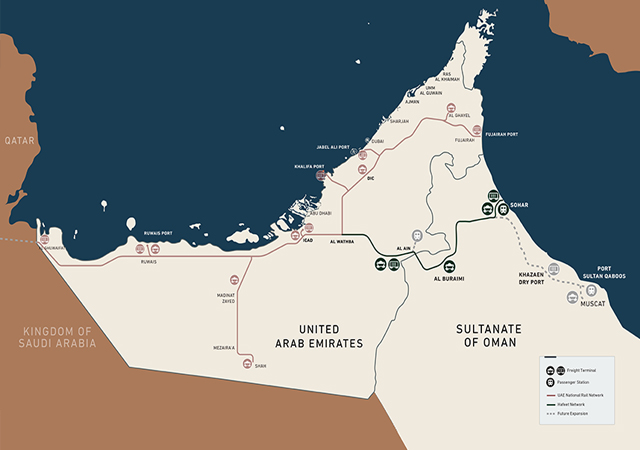
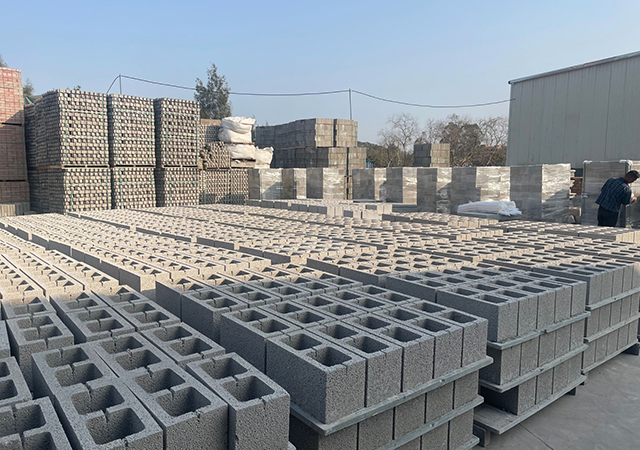

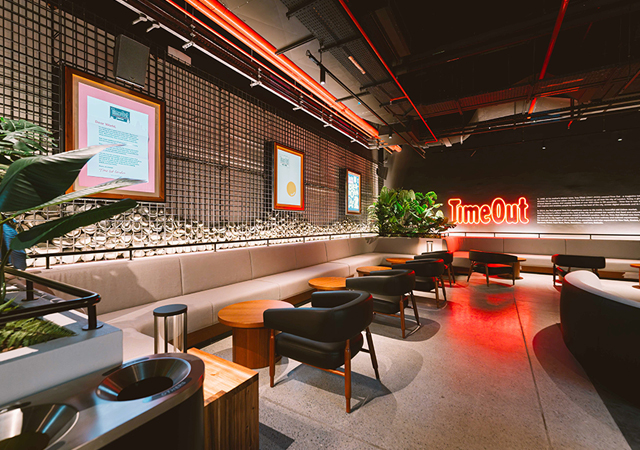
.jpg)
.jpg)
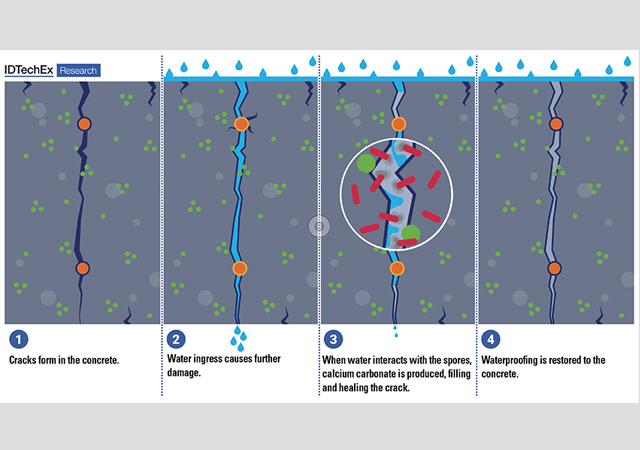
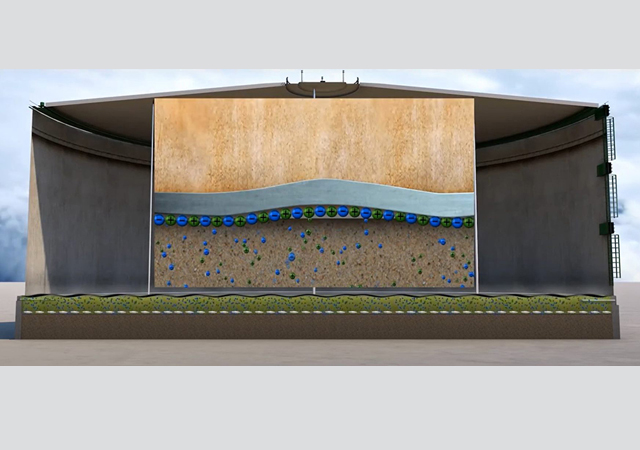
.jpg)
.jpg)
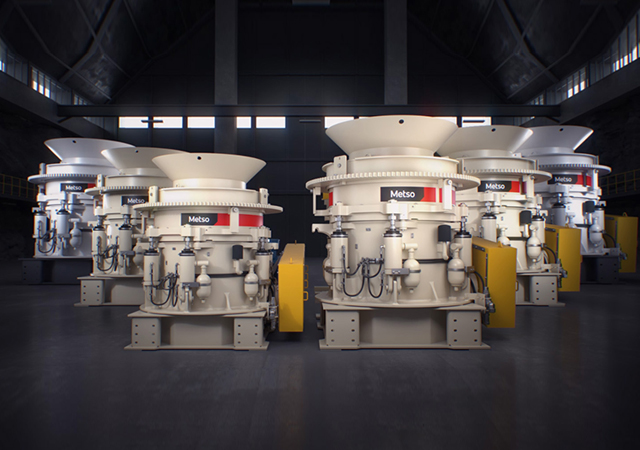

.jpg)

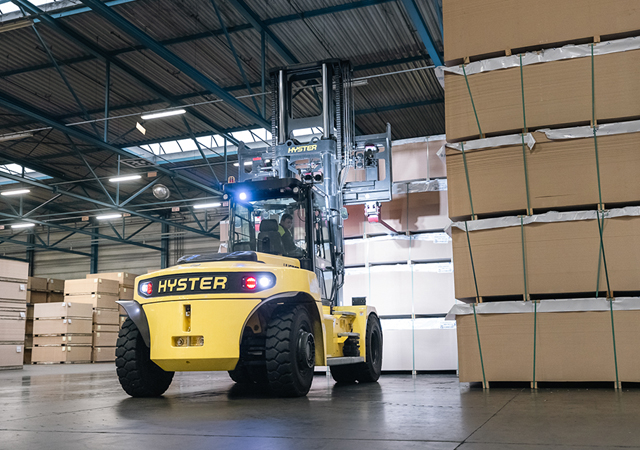
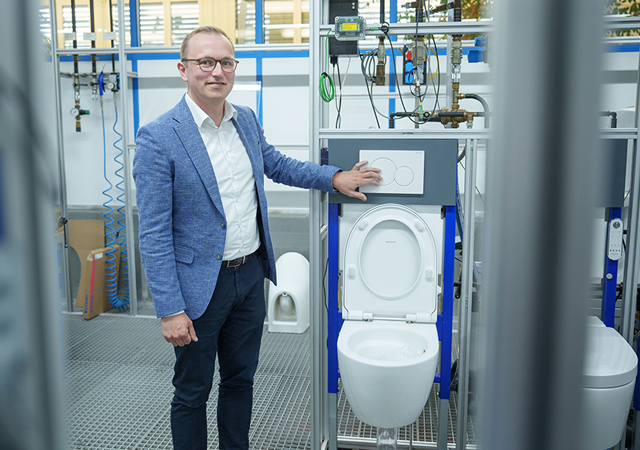

 Doka.jpg)
